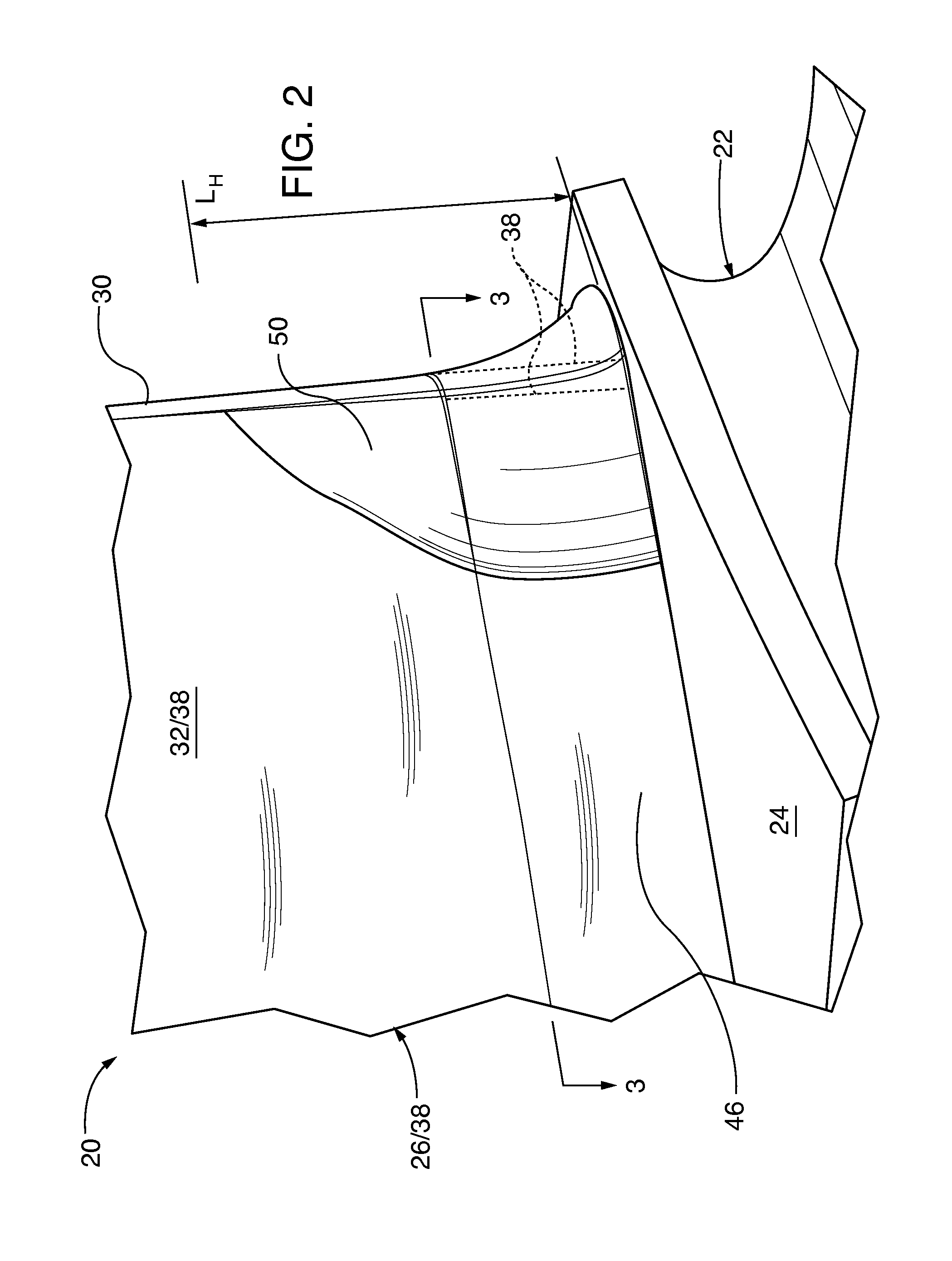Gas turbine engine blade with increased wall thickness zone in the trailing edge-hub region
a technology of trailing edge and hub region, which is applied in the direction of engine control, machine/engine, engine fuction, etc., can solve the problems of metal fatigue cracks in the blade substrate and crack propagation, and achieve the effect of reducing the thickness of the trailing edge (te) of the turbine engine blade, reducing the cyclic fatigue of the rotating mass, and increasing aerodynamic efficiency
- Summary
- Abstract
- Description
- Claims
- Application Information
AI Technical Summary
Benefits of technology
Problems solved by technology
Method used
Image
Examples
Embodiment Construction
[0022]Exemplary embodiments of the invention are utilized in gas turbine engine rotating blades. More particularly, such blades having an increased airfoil outer wall or side wall thickness zone proximate the hub and trailing edge (TE), which reduces blade cracking propensity and enhances blade service life. Airfoil TE wall thickness in this zone proximate the hub is forty to sixty percent (40-60%) greater than the comparable greatest wall thickness anywhere else along the trailing edge from outboard that zone all the way to the blade tip. In many embodiments, the TE outer wall thickness proximate the blade tip and outboard or above the zone remains constant or tapers to reduced thickness along the span or stand length to the tip. The increased thickness zone generally comprises eight to ten percent (8-10%) of the total blade stand height. In some embodiments, the corresponding outer wall thickness in the increased thickness zone transitions from the thicker region proximate the hub...
PUM
 Login to View More
Login to View More Abstract
Description
Claims
Application Information
 Login to View More
Login to View More - R&D
- Intellectual Property
- Life Sciences
- Materials
- Tech Scout
- Unparalleled Data Quality
- Higher Quality Content
- 60% Fewer Hallucinations
Browse by: Latest US Patents, China's latest patents, Technical Efficacy Thesaurus, Application Domain, Technology Topic, Popular Technical Reports.
© 2025 PatSnap. All rights reserved.Legal|Privacy policy|Modern Slavery Act Transparency Statement|Sitemap|About US| Contact US: help@patsnap.com



